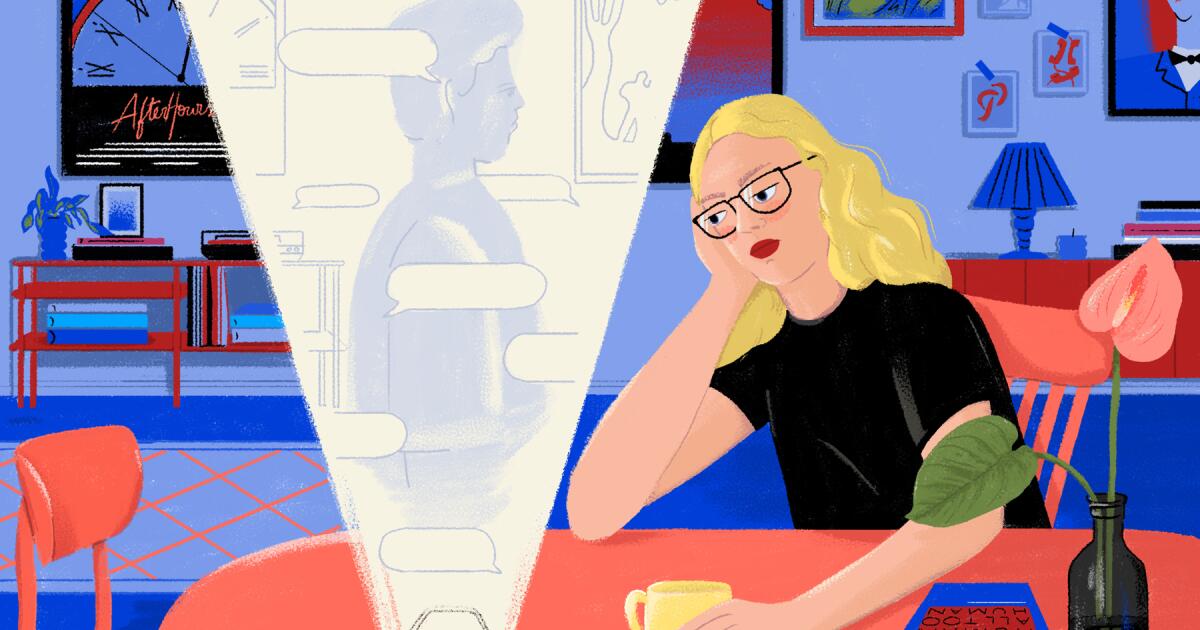Lynn Bufka isn't sure how she'll face the next nine months.
The licensed psychologist, stress expert, and spokesperson for the American Psychological Association. He usually watches the news on television every morning. But with the contentious presidential election looming, he has lately been reluctant to pick up the remote.
“I don't want to hear anything about the election and it's only January,” he said in an interview last month. “Even as a psychologist I'm trying to think of the best way to handle it.”
Bufka doesn't want to bury his head under a rock, but he also can't afford to worry about what will happen if his candidate loses. He has a job to do, relationships to maintain, and other life responsibilities that demand his attention.
In especially uncertain times like these, when his own patients are consumed by anxiety, Bufka recommends compartmentalization: separating different parts of one's mental and emotional experience.
As questions arise about our political, environmental and technological future, experts say compartmentalizing can be a useful tool to help us regulate our emotions and face challenges without falling apart. Yes, it's a defense mechanism that sometimes gets a bad rap, said Gloria Mark, a retired computer science professor at UC Irvine, but that doesn't necessarily mean it's bad for you. “It's a feature that helps us navigate through our days without being overwhelmed by all the stress,” she said.
While it is possible to compartmentalize too much and, in turn, numb feelings, taking occasional breaks from intense emotions is an essential component of mental health. We all do it instinctively: we hold back tears to answer an important work call, we silence our anger to communicate diplomatically with our partner, or we suppress our anxiety to read our little one a bedtime story. In the last decade, we, as a society, may have even developed a greater awareness of this self-preservation technique; Google searches for compartmentalization have increased steadily since 2004.
a bad word
Dr. Tara Swart, a neuroscientist and professor at the MIT Sloan School of Management, recognizes that the term “compartmentalizing” is loaded with meaning. “It feels like you can take something you're worried about, put it in a box and not think about it,” she said. “Actually, no one can do that.”
Instead, Swart says, compartmentalizing can be both good and bad for you. Healthy compartmentalization involves regulating emotions, while unhealthy compartmentalization means repressing them.
At its most useful, compartmentalization is the ability to recognize challenges in your personal circumstances or current events, and make a conscious decision not to let those things take over your thoughts and emotions, he said. But that does not mean excluding the world.
“The opposite would be to say, 'I'm not going to read the news,' 'I refuse to talk about anything difficult,' and 'Every time I think of something sad and scary, I'll just dwell on it.' down,'” she said. “That's not healthy”.
There are times when we simply cannot face an emotion in the moment. Maybe we have a deadline, or a child to take care of, or we're at the grocery store and it's inappropriate to cry, yell, or scream. In that case, Swart said, we can come to an agreement with ourselves that we will make space to sit with it, journal about it, or talk about it with a friend or therapist later.
“It's not easy and I'm not saying we can do it 100% of the time,” Swart said. “But it is possible to alleviate that constant worry.”
The intention is everything.
Jaz Robbins, a trauma therapist who teaches psychology at Pepperdine University, said the key to healthy compartmentalization is intentionality.
“I think about the people who work for social justice,” he said. “They also have to take a break, rest and rejuvenate. If they said, 'I will not rest until justice is done,' whatever that metric is, then, unfortunately, that person may not see rest in her life.”
Advocates and others can relax by being mindful of why they are taking a break from their activism to go dancing, visit family or simply catch up on the latest season of “The Great British Baking Show.”
“To me, compartmentalizing is when an individual exercises a healthy boundary, with intention, in service of a value they hold,” he explained. “That value could be family, health, community, relaxation or even comfort. Convenience is absolutely a value.”
Robbins' patients are already starting to talk to her about their anxiety about the November election.
“They say, 'I don't have the bandwidth for this,'” he said. “And I tell them, 'You don't.' When you get that whisper or that hint that you don't have the bandwidth for something, you don't have the bandwidth.”
To help them take even a brief break from their worries, Robbins challenges her patients to create what she calls “a discomfort tolerance toolkit.” This involves listing five things that make you smile, five that make you laugh, five that inspire you, and five that help you relax.
“The idea is to put it together before you need it,” he said. “That way, when the bottom is shaky, you can go to your list and say, 'I really need to laugh right now.'”
Other strategies to regulate emotions around a distressing situation include meditation, yoga and exercise, Swart said. She also recommends keeping a journal, talking to a friend or therapist, and imagining what advice you would give to someone you care about who is in the same situation. “This allows you to step back and have perspective,” he said.
Bufka, the stress expert, said getting enough sleep is especially important when facing stressful situations. “If we don't get enough sleep, we will be less prepared to face whatever comes our way.”
She encourages her patients to develop habits that help them relax before bed and distract themselves from world events. For her, it's about solving number puzzles like Sudoku. For others, she might be cuddling with a pet or reading a fantasy or mystery novel.
Bufka also tells people that, right before they fall asleep, they can visualize a box and imagine putting all their worries in it, as long as they don't throw away the key.
“They'll still be there when you wake up,” he said.












